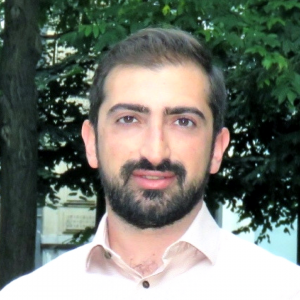Air pollution is not just an environmental issue: it can reduce people’s lifespan and cause serious heart and lung disease. We talked with Giuseppe de Carlo (Director of Operations and Projects at the European Federation of Allergy and Airways Diseases Patients Associations – EFA) about health effects of air pollution. EFA is a non-profit network of allergy, asthma and COPD (Chronic obstructive pulmonary disease) patients’ organisations, representing 42 national associations in 25 countries and over 400,000 patients. Here is what we learned:
Health effects of air pollution
Research over many decades has highlighted the extent of the effects of outdoor air pollution on the respiratory system. Even short-term increases in air pollution have been associated with respiratory symptoms and temporary decreases in lung function.
According to the Organisation for Economic Co-operation and Development (OECD), air pollution will be the biggest environmental cause of premature death by 2050. These pollutants increase the death rate, especially in sensitive population groups such as the elderly and children, or those suffering from respiratory diseases. It is estimated that poor air quality in Europe leads to an average loss of 8.6 months’ of life expectancy.
Scientific studies show the link between the development of lung diseases and air pollution. Particulate matter plays a role in the development of allergic asthma, including in children, as well as in triggering exacerbations of asthma. A recently published study states: “Exposure to air pollution early in life might contribute to the development of asthma throughout childhood and adolescence, particularly after age 4 years, when asthma can be more reliably diagnosed. Reductions in levels of air pollution could help to prevent the development of asthma in children.”
You can read more about the links between air pollution and health on the EFA website.
EFA is also collaborating with the European Respiratory Society. Interested in more background reading? Check the resources from ERS on air pollution – a great compilation of articles and materials!
Advocating for better air in Europe
“We need better air!
9 out of 10 European citizens breathe polluted air. This is not acceptable – and: it is getting worse and worse. People are more and more moving to cities from the rural areas. The situation in cities regarding air quality is not improving.”
Roberta Savli (Director of Strategy and Policy EFA, May 2018)
EFA is planning a campaign to raise awareness about the need for better indoor and outdoor air quality in the preparations for the elections to the European Parliament in 2019.
The European Respiratory Society issued the following recommendations for policymakers:
- European countries must support the implementation of the WHO recommended air quality guidelines for outdoor and indoor air – through an ambitious revision of limit values for ambient air pollution.
- European countries should reinforce their efforts to reduce source pollution from all sectors – industrial, transport and energy.
- European countries should make air quality an integral part of their transport, industrial and energy policies and ensure that the correct level of governance – national, regional or local – is equipped to tackle sources of pollution. States also need to improve cooperation on cross-border pollution and ultimately must undertake to implement and enforce air quality legislation.
You can read more in the ERS White Book on air quality.
EFA coordinates the Interest Group on Allergy and Asthma in the European Parliament, together with EAACI, the European Academy of Allergy and Clinical Immunology. This Interest Group meets twice a year. This group plays an important role in advocating for better air in Europe.
EFA project MyAirCoach
EFA collaborated in a project that developed an app, specifically designed for patients with respiratory diseases: MyAirCoach. A prototype for a device that measures indoor air quality has been built: PM 2.5 and PM 10, NO2, pressure, temperature, humidity. The app also shows outdoor air quality. MyAirCoach is using the sensor measurements only as a source of information at the moment. It does not provide recommendations for changing treatment according to external factors. That could be a second step, but the recommendations need to be very accurate for that.
About hackAIR
Giuseppe is a member of hackAIR advisory board and has been engaged in hackAIR from the beginning:

“I find the hackAIR platform and app very easy to use and useful. I built a sensor, and it is indeed easy although I am not a very techy guy. In terms of the process and how the system has been designed and developed: the final outcome of hackAIR is very good!”
hackAIR is intended for citizens in general. EFA is working with people with asthma, allergies and respiratory diseases. These diseases are linked to air pollution. It would be interesting for the EFA network if it would be possible to select specific parameters (including humidity). The patients would then receive information about their individual selection. The impact of environmental factors on their health condition is different for each asthma patient. Giuseppe said: “It would be great if air quality applications like hackAIR could provide options to personalize the information more.”
Giuseppe added: “One of the things that I like the most about hackAIR is the engagement with citizens: raising awareness about the topic. Also is important is the focus on behaving in a different way. These are issues that our patient network is involved in. They relate to our work on empowering patients to self-monitor. Changing behaviour is sometimes quite a challenge. Let’s talk further how hackAIR and EFA can collaborate and support each other’s work!”



 Together with the green movements and the local green party, we wanted to do something about the situation. For that, we first needed more data to find out why, when and where the
Together with the green movements and the local green party, we wanted to do something about the situation. For that, we first needed more data to find out why, when and where the 